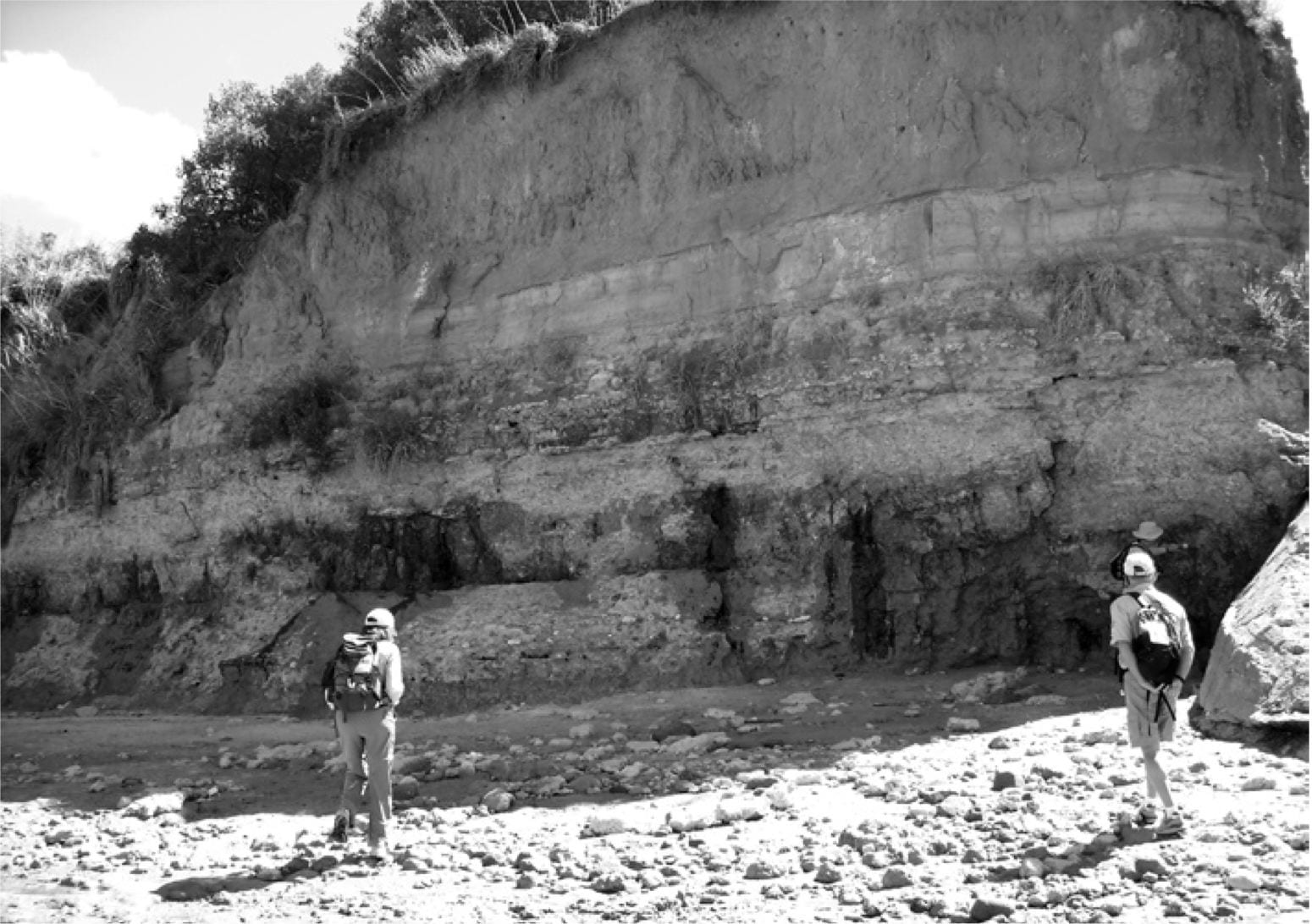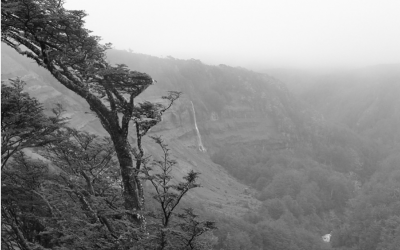The Voyages of Charles Darwin
Travels in South America
We often forget that the most creative years of Charles Darwin’s life were passed in South America. For three years in the early 1830s, Darwin traveled extensively in Uruguay, Argentina and Chile, and made important shorter visits to the Galápagos Islands and coastal Brazil. The ship that brought him to the continent was HMS Beagle, captained by Robert FitzRoy, and commissioned by the British Admiralty to survey the South American coastline for peaceable naval purposes. Those years afloat have become part of history.
Yet Darwin’s voyage was mostly on land. Wherever it was convenient FitzRoy arranged to leave Darwin ashore so that he could pursue his scientific observations. The two men would rendezvous several weeks later and move onwards to another area. This method of traveling allowed Darwin to make six major expeditions in South America and on occasion even to rent a small house as a base for his natural history explorations. By the time the ship struck out into the Pacific to continue its voyage around the world, Darwin had come to understand a great deal about the geology and natural history of this enormous landmass.
Darwin’s voyage on the Beagle is, of course, famous for turning his mind towards evolutionary theory. For us, it is also a story full of symbolic resonance. On that voyage he began an intellectual journey, a quest, if you will, at the same time as he assembled the wide variety of information about the natural world that would help provide an answer. Darwin himself appreciated the lasting impact of the voyage on his subsequent work. The voyage opened the door to exceptional sights and opportunities—the impressive landscapes of South America, the fecundity of tropical Brazil, the brilliance of the stars over the Andes, dramatic encounters with other cultures and other ways of life, hazardous travels off the beaten track, and countless moments when his imagination was powerfully stirred. On his return, his Beagle successes enabled him to join the world of natural history experts and inspired the evolutionary views later expressed in the 1859 On the Origin of Species by Means of Natural Selection. The voyage made him what he eventually became. Long afterwards he declared in his Autobiography, “The voyage of the Beagle has been by far the most important event in my life and has determined my whole career.”
All these endeavors and more can be found in the book that Darwin published in 1839. Originally issued under the titleJournal of Researches, it is now known more usually as Voyage of the Beagle. Based on the extensive diaries that he kept during the five years at sea, and drawing on the help of professional naturalists after his return, this book of travels has charmed readers ever since. Here we can follow his lengthy inland expeditions and what he called his gallops across the pampas; his remarkable encounters with indigenous peoples, and the excitement he felt at recognizing that he could make new and valuable contributions to science. The book also tells us a great deal about the way that natural history got done during the 19th century, from the moment that a rock or fossil, an iguana or a beetle, was picked up by Darwin and put into his collecting bag, to its arrival in a wooden Admiralty box or barrel at Cambridge University, where his friend and former professor John Stevens Henslow was storing material in an unused lecture room, ready to be classified and distributed to British experts. At the same time, an extensive series of letters Darwin wrote to older scientific colleagues, show him working extremely hard on living specimens, always reading, writing, cataloguing, and using his microscope to make preliminary dissections. He also made careful field notes that were intended to remind him about key characteristics of the living organisms or important geological features.
Darwin was in fact learning how to process information. Just like us, but without the benefit of computer data bases, he needed to record his information in a retrievable form. He anticipated a lifetime of further study of the fascinating material he brought home. These notes and letters are a truly extraordinary record of a young man’s personal development. And in letters to his sisters at home in Shrewsbury, he described his deep emotional engagement with the lands and people he encountered. Inexhaustible good humor and energy sing out from every one of these pages—here is a young man who loves what he is doing, who is having fun, who is full of intellectual vigor—an attractive combination of qualities that has captivated generations of readers.
Looking beyond the personal, Darwin’s account of his time in South America also has much to tell us about the role that ‘travel’ held in a rapidly changing political world. Even without Charles Darwin at its center, the Beagle voyage provides a significant account of the adventures and dangers of a voyage carried out at a key point in political history. The British Admiralty’s desire to chart the South American coast was to enable informed decisions to be made on naval and commercial operations along the stretch from Bahía (now Salvador) in Brazil to Bahía Blanca in Argentina and into the relatively unexplored coastline of Tierra del Fuego, and to enable Britain to establish a stronger foothold in these areas, so recently released from their commitment to trade only with Spain and Portugal. Like the other developed nations of the world, Britain had commercial expansion in mind. Exercises such as these were not always peaceful. As far as the Beagle was concerned, FitzRoy was a government representative engaged on official business.
But that was not necessarily how other nations might see it. The Beagle was involved in several neo-colonial incidents, including military action in Montevideo and being caught in a naval blockade off Buenos Aires. When Darwin rode out into the pampas around Buenos Aires he arrived in the middle of General Juan Manuel de Rosas’ fiercest guerilla campaigns. Rosas had succeeded in concentrating all public authority in his own hands during that period, and had assumed the position of a popular savior and dictator. Rosas’ troops were at that time relentlessly hunting down and exterminating the Indians. Darwin had to obtain a passport from Rosas and travel with a number of gauchos, who knew the terrain, in order to secure his safety. He describes several occasions when he and his travelling party had to talk their way out of trouble. The passport was granted to ‘El Naturalista Don Carlos,’ which was widely understood to mean a man who knows everything. Darwin told some amusing stories about the way this inspired great respect from people who probably did not know what it meant. Natural history investigations and coastal surveys could nevertheless be seen by others as politicized, even dangerously nationalistic, pursuits. To ensure his men’s safety, Captain FitzRoy insisted that no one should travel on shore alone —Darwin included.
Nevertheless, Darwin made new friends abroad. The gentry in the large towns of South America pursued activities appropriate to their social standing. Darwin stayed in a number of very great estancias, often carrying a letter of introduction from some civic dignitary. Many cities had libraries, theatres, and opera houses. There were local newspapers at every port but what is perhaps not quite so well known is that FitzRoy and his crew received regular parcels of English newspapers and journals, along with personal letters sent onwards by the British Admiralty. Although Darwin naturally complained about being out of touch, the reality was that he and FitzRoy were remarkably well informed about home activities.
Darwin collected natural history specimens widely and carefully. Several other European naturalists had covered some of the same territory beforehand, including the talented French naturalist Alcide d’Orbigny, collecting for the Paris Museum of Natural History during the 1830s. Darwin chose to concentrate on the less well known organisms. In South America he collected complete suites of insects, small invertebrates, birds, spiders, corals, mollusks, mammals, and fossils when he could get hold of them, having no scruples about buying specimens if he had the opportunity. He knew he would never be able to visit again and that he should not miss any chance to gather as much information as possible. Many members of theBeagle’s crew were also interested in natural history and were able to make small, sometimes significant, collections of animals and plants. After the voyage, this unexpectedly became important. In March 1837, a few months after the Beaglereturned home, it became apparent that Darwin had not sufficiently recorded the geographic location of bird specimens from the Galápagos Islands. He needed the records made by other members of the crew, including those of the surgeon Benjamin Bynoe and captain FitzRoy. These records helped him pinpoint the locations for his specimens—the vital information that allowed Darwin to see that each form of finch was restricted to an individual island.
During Darwin’s intensely active days on shore, he also pursued his fascination with geology, fostered so recently at Cambridge University and on a short field excursion in Wales with his professor Adam Sedgwick. It was in South America that he first began to believe that he might be able to do something worthwhile in natural history and where his zest for geology started to lead him towards some of the major theoretical achievements of the voyage.
The role of Charles Lyell and his Principles of Geology in this enthusiastic commitment to geology in Darwin’s early work is perhaps now so well known that there is very little to add to the various accounts given by historians. Darwin read Lyell’s famous book as soon as it was published, and was delighted by the grand theoretical scheme he found there. Lyell’s theory of the gradual elevation of land out of the sea, for instance, could be used by Darwin to explain many of the things he saw. The thick alluvial deposit of the pampas was consequently interpreted by him as an elevated estuary, and Darwin thought that the fossil mammalian bones he found there must have been swept into the sea by tertiary rivers, only to be covered with sediment and eventually raised above the surface. Rounding Cape Horn, he thought the islands looked like a row of submerged mountains. He was particularly gratified to find that the high double ranges of the west coast seemed to have been uplifted, step by step, from a state similar to that now exhibited by Tierra del Fuego. Cross-country traverses and coastal surveys in Chile left no doubt in Darwin’s mind that the elevation of the Andes had taken place exactly as Lyell had surmised. As he later declared, Darwin was here seeing the origin of landscapes as if he had the eyes of Lyell.
This special vision was also plainly to the fore during Darwin’s visit to the Galápagos archipelago in Ecuador. The Beagle arrived in the archipelago in September 1835, staying for five weeks. Darwin visited four of the islands. His interest in the archipelago was intense because it promised a new kind of geological experience. He hoped to see active volcanoes (in this he was disappointed) and evidence of recent volcanic activity. Countless lava rocks of various ages and numerous volcanic cones convinced him that the islands had only recently, in geological terms, emerged from the sea bed. Darwin also relished the chance to investigate the animal and plant life of the archipelago. Insular populations were fascinating objects at any time, and the Galápagos Islands were known to possess a rich variety of endemic species. Here again it would be possible to see how animals and plants colonized new lands, how bare rock was clothed and colonized with living beings. He enjoyed the tortoises, collected nearly all the land bird, and studied the two species of iguana very closely, even dissecting a marine iguana to confirm his suspicion that the animals were entirely vegetarian and took their meals in the sea.
The other topic that should finally be mentioned is Darwin’s discussion of the Fuegians. The Beagle carried three individuals from Tierra del Fuego who had been Christianized and given an elementary education in Britain, and were now being returned to their original land in order to establish an Anglican missionary station. The three on board fascinated Darwin and he recounted his naïve amazement that after so few years in English company they were now almost another “species of man” from their literal relatives. Darwin felt the indigenous inhabitants of Tierra del Fuego were primitives existing on the edge of savagery, and the comparison between these peoples and their Anglicized relatives on board the ship struck him hard. This encounter with primitive humans in fact destablized his ideas about the fixity of species just as much as the Galápagos species did. Both Darwin and FitzRoy were saddened by the eventual collapse of the mission. Of all of Darwin’s varied experiences, this example of the temporary nature of civilization and the contrast of human habits and lifestyles moved him the most. ”I could not have believed,” he wrote, “how wide was the difference, between savage and civilized man. It is greater than between a wild and domesticated animal, in as much as in man there is a greater power of improvement.”
Spring 2009, Volume VIII, Number 3
Janet Browne is Aramont Professor in the History of Science, Harvard University. She is the author of a two-volume biography of Darwin, Voyaging (1995) and The Power of Place (2002). In January she visited Tierra del Fuego for the first time.
Related Articles
Editor’s Letter: The Sky Above, The Earth Below
When I first started working on this ReVista issue on Colombia, I thought of dedicating it to the memory of someone who had died. Murdered newspaper editor Guillermo Cano had been my entrée into Colombia when I won an Inter American Press Association fellowship in 1977. Others—journalist Penny Lernoux and photographer Richard Cross—had also committed much of their lives to Colombia, although their untimely deaths were …
Other Cities, Other Worlds
Author of a marvelous book that excavates the palimpsests of memories encrypted in the image-filled voids of Berlin, Andreas Huyssen extends his investigation of the urban imaginary in…
Dirty Secrets, Dirty War: The Exile of Editor Robert J. Cox
t may be argued that Dirty Secrets, Dirty War: The Exile of Editor Robert J. Cox should have been written three decades ago, most likely in 1981, when Cox was enjoying, as I do now, a Nieman fellowship…





